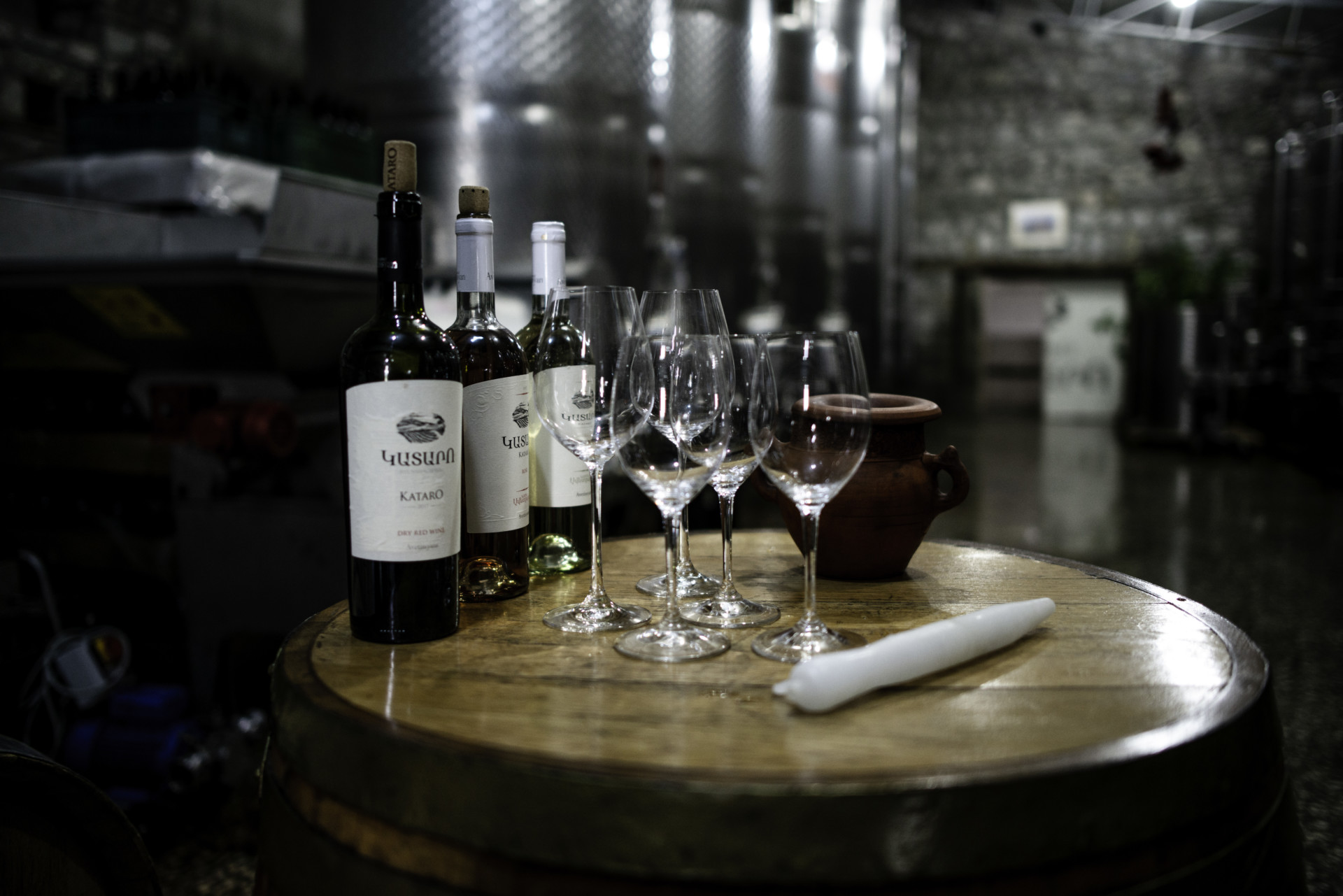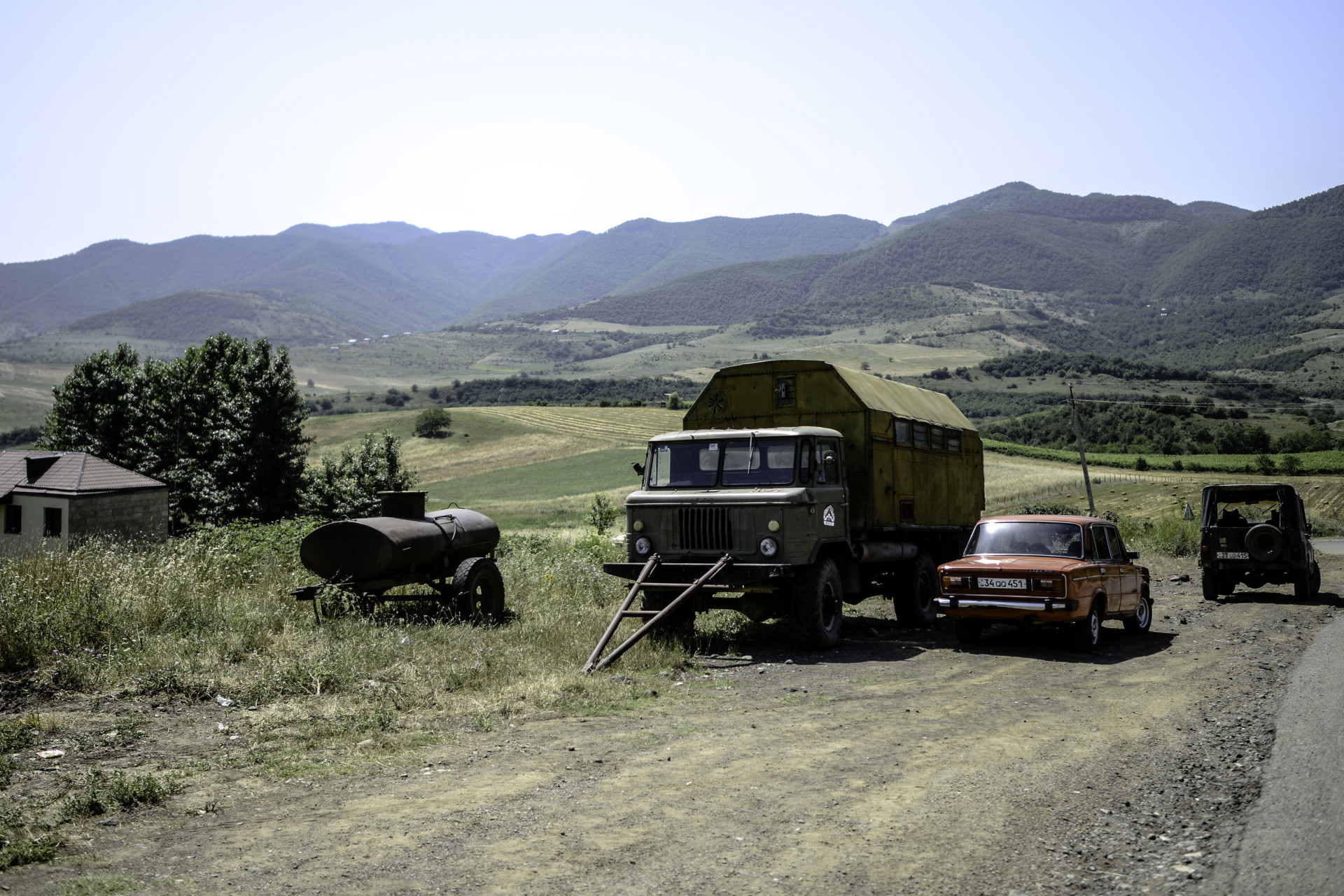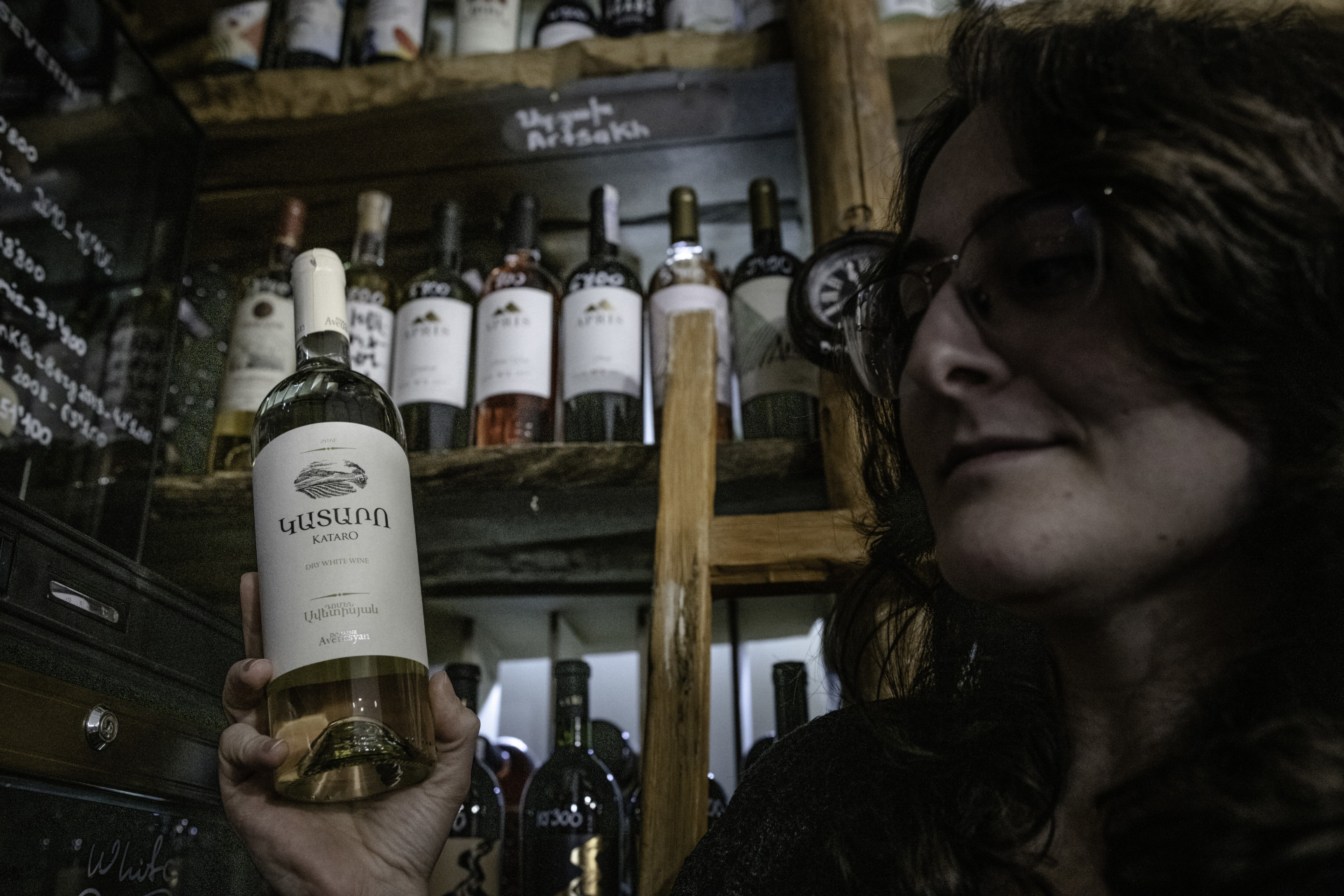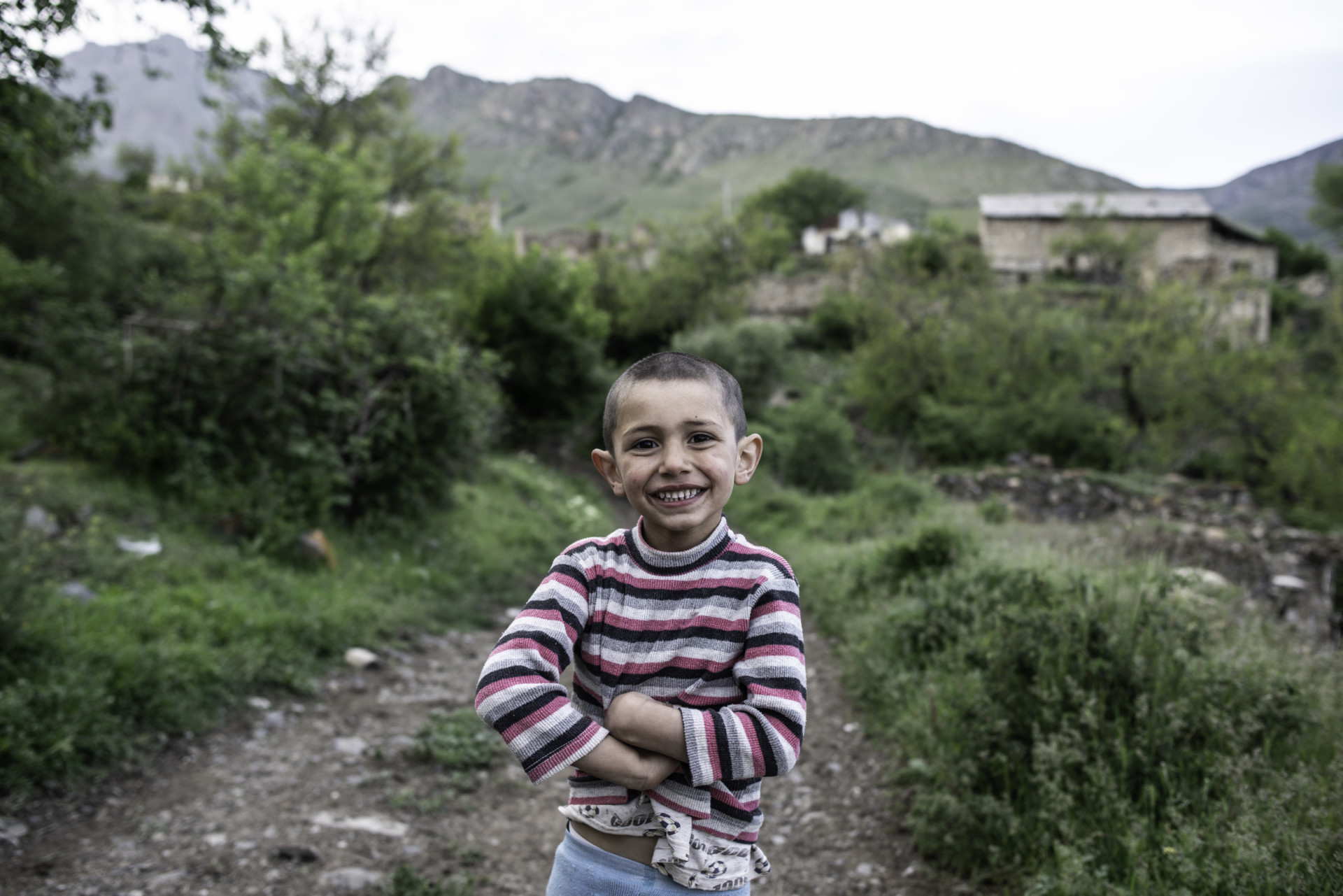In Yerevan, Armenia’s capital city, a quaint tree-lined street called Saryan takes you to a landmark wine bar with large, semicircular picture windows. In Vino, as it is called, is considered a rarity in Armenia because it serves wine and nothing else. The place greets you with a feel reminiscent of the countryside with cozy cabin furniture and oak shelves that appear ready to buckle under the weight of thousands of bottles of wine. There is only one thing missing from the scene: customers.
“It’s the pandemic, you know? We cannot offer wine tastings anymore, and people would rather get drunk at home these days,” explains Maryam Saghatelyan, In Vino’s owner, who is in her mid-30s. She opened the wine bar in 2012, and it soon became a focal point among local urbanites, expats, and tourists. But these days, she relies mainly on sales.
“We have wine from all over the world, but people are increasingly demanding this one,” adds the entrepreneur while holding up a bottle of white wine with the label Kataro written in the Armenian alphabet. The label’s price keeps rising as less of it becomes available. Once Nagorno-Karabakh´s most famous brand, Kataro has suffered in the recent war, which left the winemakers displaced and their vines unattended and in disarray.
“That´s the risk of making wine in Armenia — anything can happen,” says Saghatelyan before carefully putting the bottle back on the shelf.
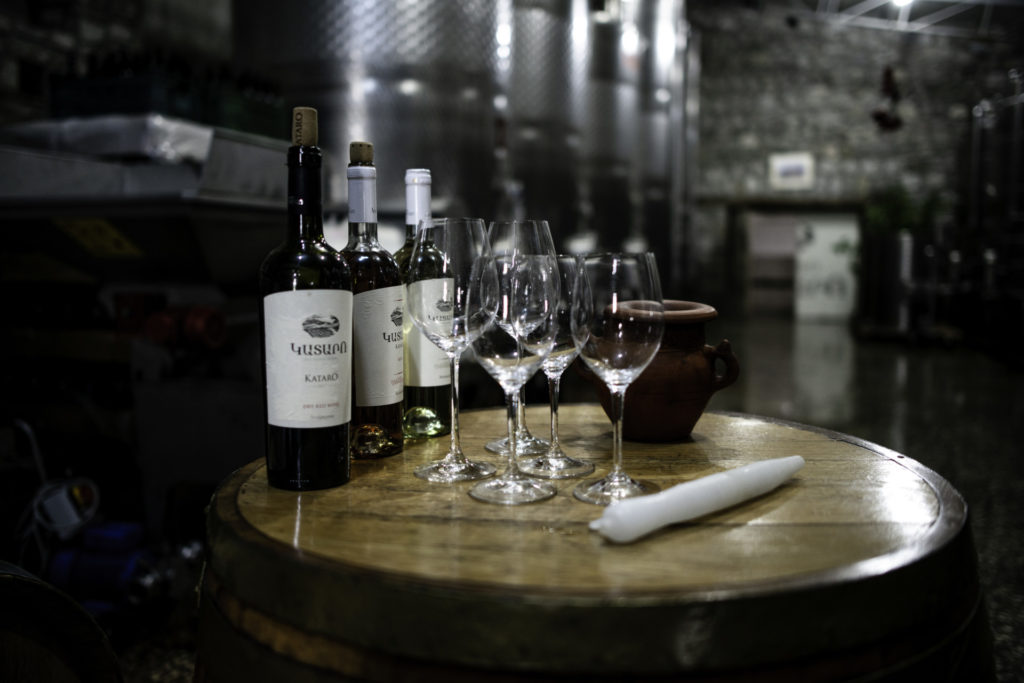
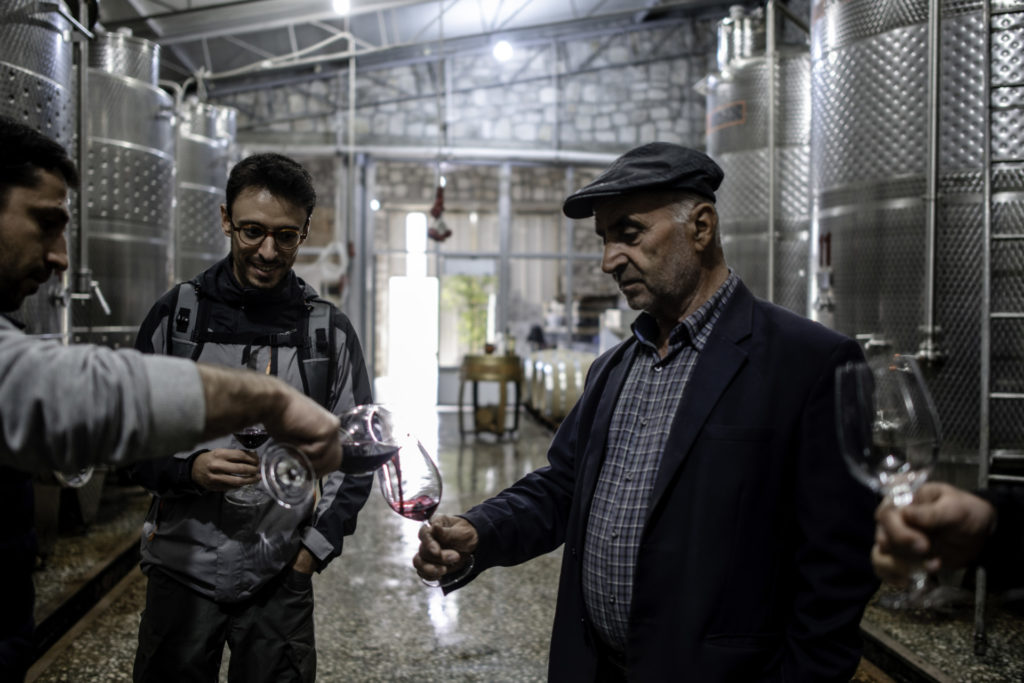
In November, Azerbaijan reclaimed control over the breakaway region of Nagorno-Karabakh in a peace deal brokered by Russia. The asymmetric conflict between Armenia’s conventional army and Azerbaijan’s overwhelming air power lasted a mere six weeks, but its roots date back to the Gorbachev era in Soviet times, making it one of the longest ongoing unresolved disputes from the former USSR. After a full-scale war from the late 1980s to May 1994, Armenians gained control of the enclave and its seven adjacent districts, displacing over 700,000 Azerbaijanis from Nagorno-Karabakh and its surrounding territories.
The winemakers of Nagorno-Karabakh like to claim they have been making wine for millennia in these valleys, but evidence of this is hard to find. In Soviet times, there was one state-owned wine factory located in Askeran, near the enclave’s largest city, Stepanakert. It fell to ruin in the 1990s during the war and was later rebuilt as a production facility for the Artsakh Brandy Company. In the ensuing years, other boutique businesses and vineyards began to sprout, one of them Kataro, which in 2010 became a leader among the 15 wineries in the then-unrecognized republic. Its owners, the Avetissyans, a well-known family that has been in the wine business in the Hadrut region since the 1920s, named their label after the Kataro abbey, located at the top of a nearby hill.

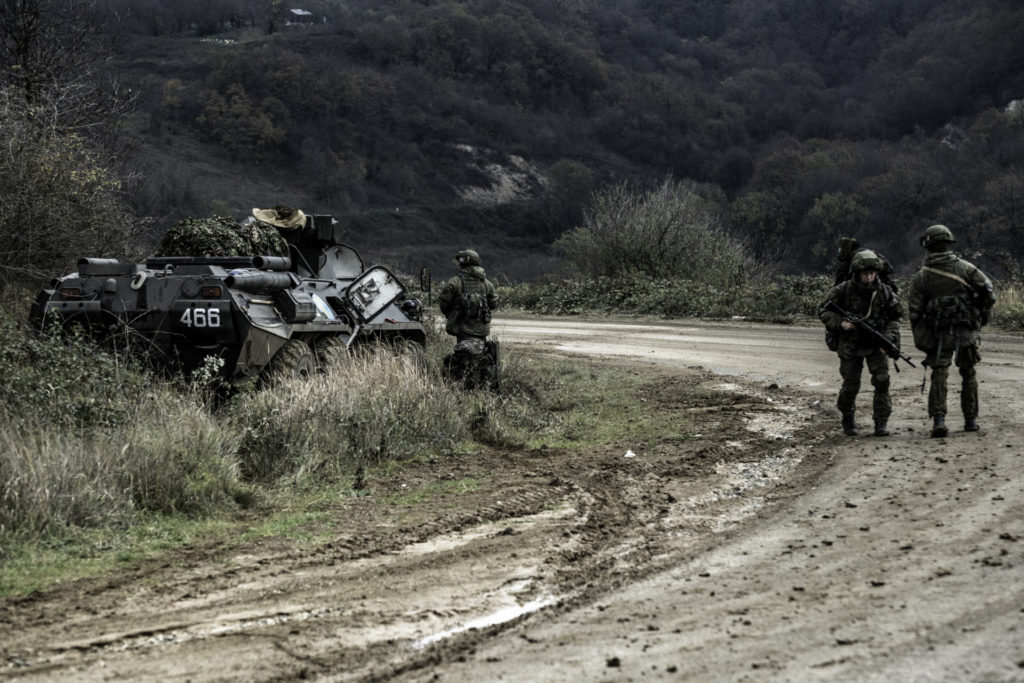
In the spring of 2016, Grigori Avetissyan expanded the family business into a second vineyard. It was part of a scheme encouraged by Karabakh’s Culture Ministry, which asked him to establish a winemaker’s association and foster higher production and superior wine quality in the region. In retrospect, the ominous signs were present that week in April when Avetissyan planted his new vines as the region saw some of the worst fighting in decades between Armenians and Azerbaijanis. But the Avetissyans felt optimistic about their venture, and the region’s winemakers kept harvesting their unique grape.
“It’s grown only in Karabakh, not in Armenia or in the rest of Azerbaijan, and it gives red wines an almost vegetal edge and intense tannins,” Avetissyan told these reporters during an interview at his vineyard in May 2019. He walked across his lines of steel wine barrels and proudly gestured at his grapes. He was still exporting his wine to the EU, Russia, Canada, and the United States, where the bottles showed up as the “product of Armenia.”
Then came 2020, which, although it brought another war and a pandemic, also bestowed upon the enclave perfect weather conditions for a great vintage. Kataro was harvested at an elevation of 800 meters (2,624 feet) in Togh, a village tucked between dramatic mountain ranges, virgin forests, and lots of vineyards.
The Nagorno-Karabakh Wine Festival had been scheduled to be held in Togh on Sept. 17 — only 10 days before the war started. Avetissyan was busy preparing for it when the festival was abruptly canceled. Rumors of the imminent war could no longer be ignored, unlike in previous years.
“There was not a single Azerbaijani in Togh in the 1940s, and (very few) in the 1960s. My grandfather told me that there was a forced settlement, and today, the village is under their full control,” Avetissyan lamented to New Lines in early February after he and his family were displaced to Yerevan, where he currently rents an apartment.
From the neighboring Kelbajar district, which was handed over to Azerbaijan on Nov. 25 as part of a peace deal, things are seen from a very different perspective. “We, Azerbaijanis never had any issue with ethnic Armenian civilians living in the Karabakh region of Azerbaijan. Azerbaijan sees the Armenian community of its Karabakh region as equal citizens of the country. Our problem was with the Republic of Armenia as they occupied the internationally recognized territories of Azerbaijan and promoted Azerbaijanophobia among Armenians, especially among the youngest sectors of the population,” Samir Mammadov, a representative of the Azerbaijani Community of the Nagorno-Karabakh Region of Azerbaijan, said over the phone.
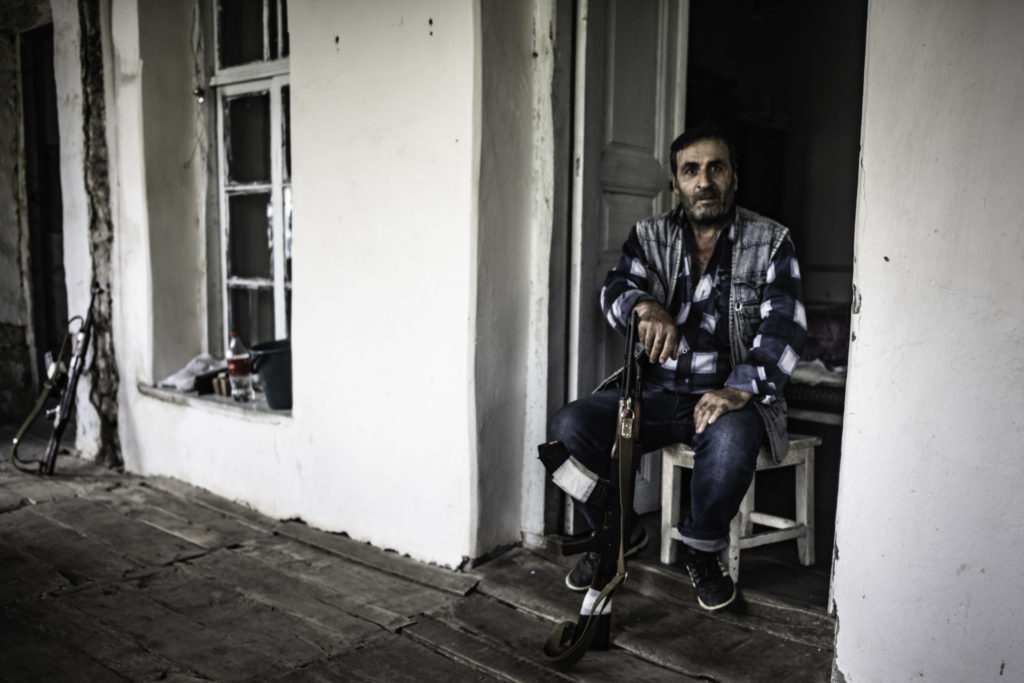
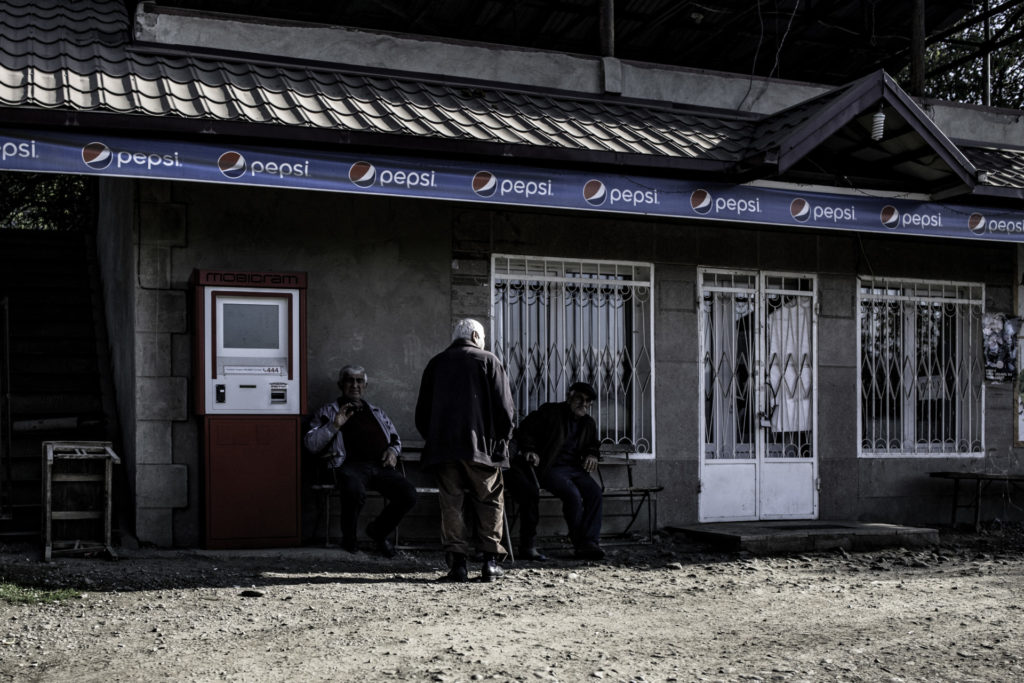
Mammadov, 28, was born in one of the Azeri refugee camps that resulted from the Armenia-Azerbaijan war in the 1990s. He returned recently to Kelbajar for the first time and visited the house that his parents had been forced to flee before he was born. Sounding diplomatic about Armenian-Azeri relations, he said there was a need for “building mutual trust” and working on “mechanisms that help bring together both communities,” but not before a few things are settled.
“Alongside mine clearance, the assessment of the destruction is also ongoing as Azerbaijan is planning to sue Armenia to pay compensation for destroying the properties of Azerbaijani internally displaced persons and vandalizing Azerbaijani cultural heritage cities,” he added. Several mosques and graveyards had been desecrated by Armenians after the 1990s war.
Armenians have been raising the alarm about protections and guarantees of their cultural heritage, including the Kataro monastery, now under Azerbaijani control.

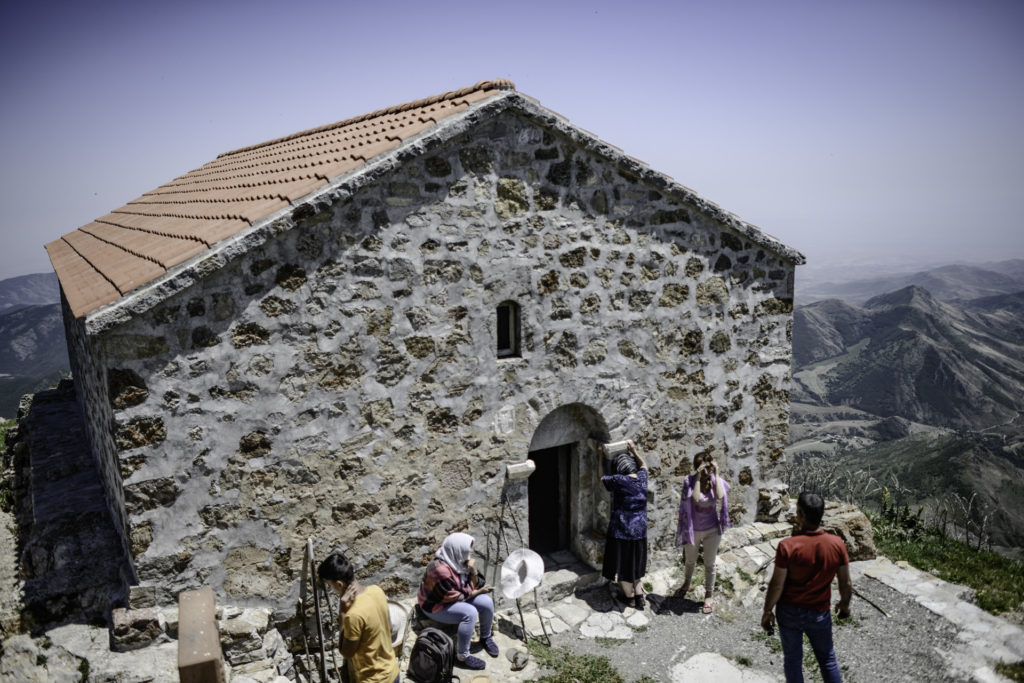
A Soviet census conducted in 1989 found that the Nagorno-Karabakh Autonomous Oblast (region) had a population of 145,593 Armenians, comprising 76.4% of the whole, with Azeris the largest minority at 22.4% (42,871), followed by several thousand Kurds, Russians, Greeks, and Assyrians. The village of Togh, in particular, hosted one of the more diverse populations, though relations were not necessarily harmonious. In “Black Garden,” Thomas de Waal recalls how, in February 1988, a line was drawn in the middle of Togh´s main square: Half of the village went to the Armenians and the other half to the Azerbaijanis, before the latter were expelled in the 1990s war.
The tide has turned and the Azeris have become the victors, but observers of the conflict say trouble continues to brew.
On Feb. 4, The European Court of Human Rights reported it had received complaints about rights violations from 228 captured residents of Armenia and from 13 captured citizens of Azerbaijan. Wartime videos showing atrocities committed against captives pop up on the internet every now and again, then disappear without any apparent culpability. Families are still waiting to learn the whereabouts of the disappeared and to retrieve the remains of their dead.
“Three months on, there are still hundreds of prisoners of war and civilian hostages in Azerbaijani hands, and this is a pressing issue that needs to be addressed to be able to move forward,” Neil Hauer, a Canadian analyst and expert on the Caucasus region said. According to Hauer, security is likely to be among the biggest challenges for local Armenians in Nagorno-Karabakh in the short term. “Baku seems to be focusing on squeezing the people in Karabakh by preventing international organizations from entering the area, including demining teams; there are constant cease-fire violations, aid shipments get often blocked. … Stability and peace look nowhere near,” he said.
For the time being, the chances for any Armenian to ever set foot back in Togh in the near future looks unlikely. But for Avetissyan, who has lost his business and has no other means of financial support, this is no reason to give up hope. One day, he promises, his vineyard and Nagorno-Karabakh will return as an “integral part of the Armenian motherland.”
Back at In Vino in Yerevan, Saghatelyan recalls the time before the recent war when hardly anyone paid attention to wine from Artsakh — the Armenian name for Nagorno-Karabakh. “It was after the war that people started demanding and buying wines from Artsakh. There are several of them, but Kataro is the only wine the majority know about,” she said. “It’s a bestseller now.”





